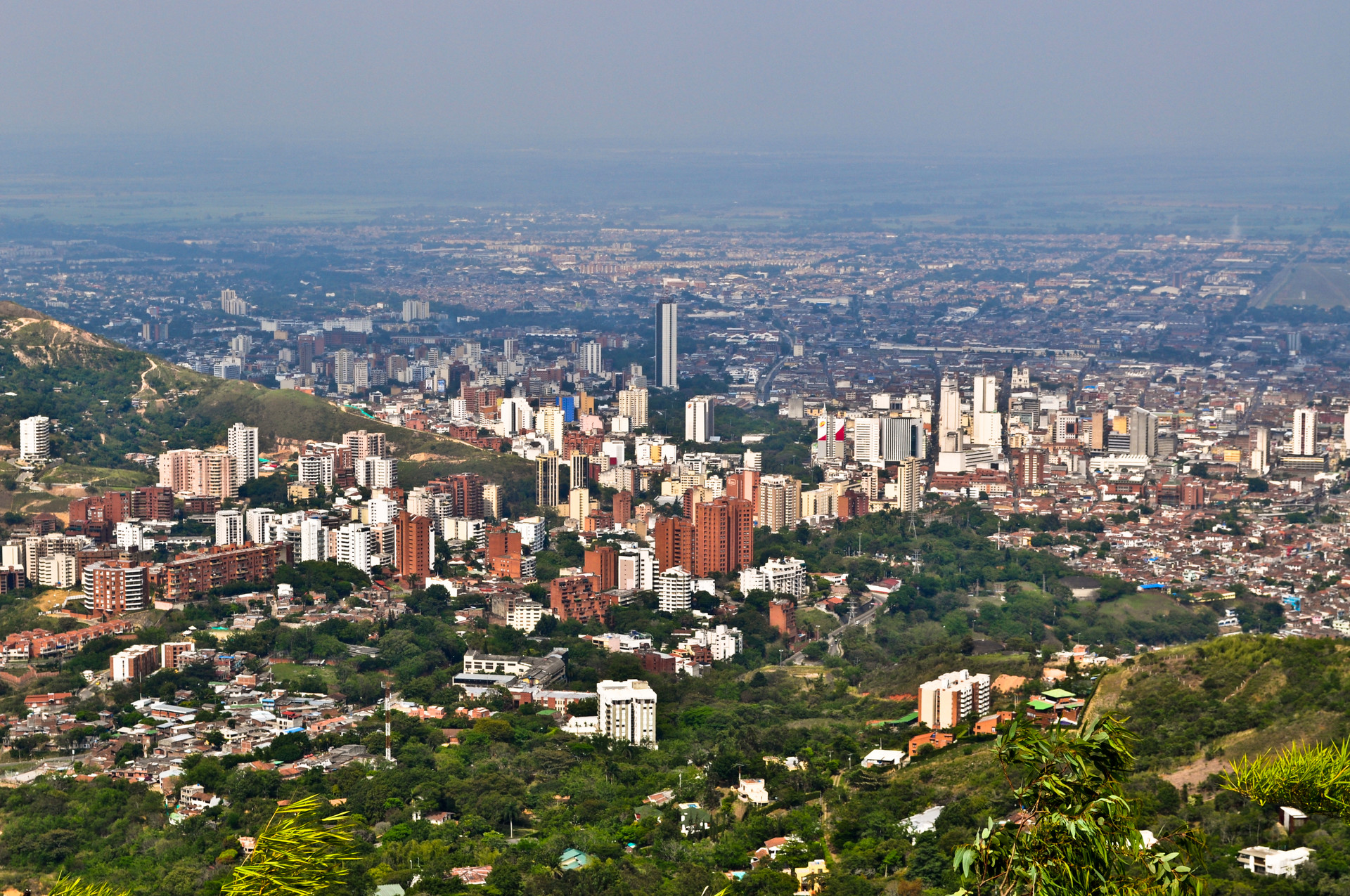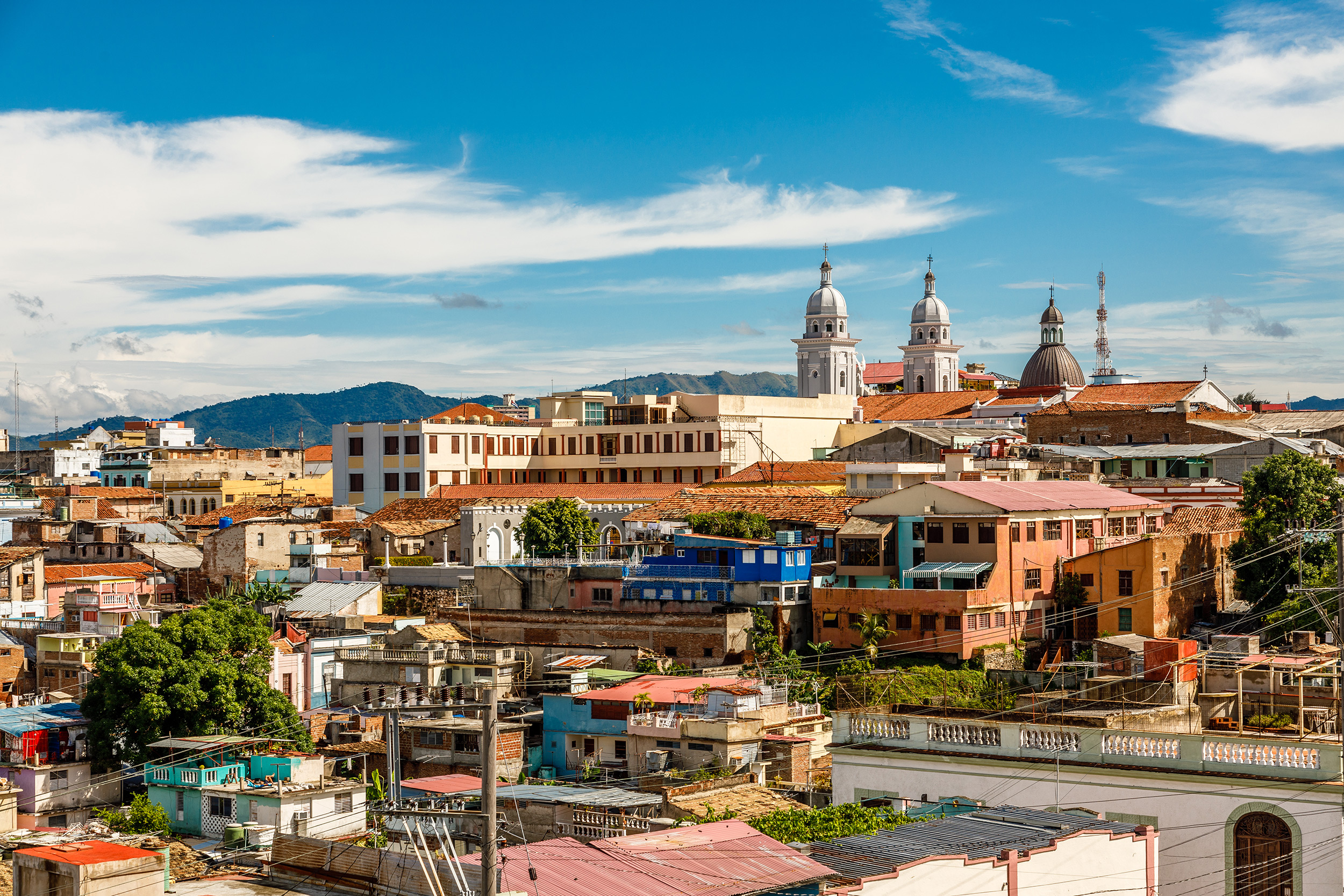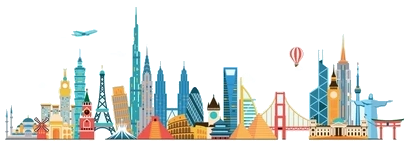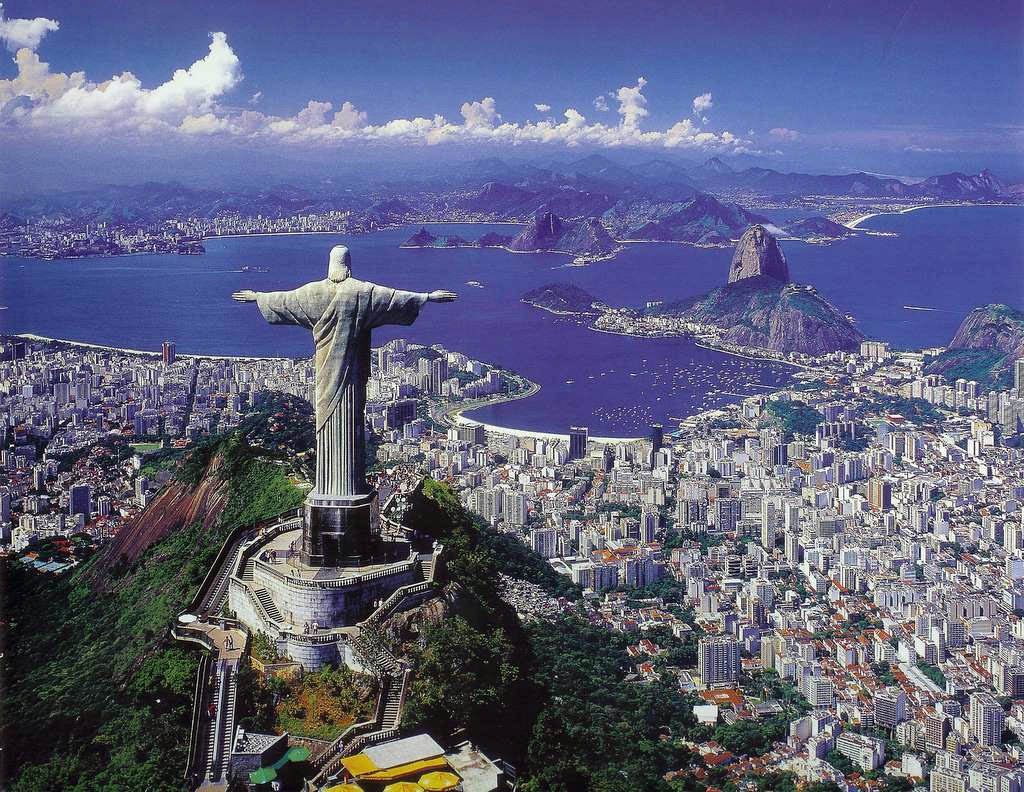
Deutsch-Chinesische Enzyklopädie, 德汉百科

 Brazil
Brazil
 FIFA Fussball-Weltmeisterschaft 2014
FIFA Fussball-Weltmeisterschaft 2014
 Olympic Summer Games
Olympic Summer Games
 Rio de Janeiro
Rio de Janeiro
 Silk road
Silk road

 Important port
Important port
里约热内卢位于巴西国土的东南部,坐落在美丽的瓜纳巴拉海湾,依山傍水,风景优美,是巴西和世界著名的旅游观光胜地。面积4.36万平方公里。人口 1,413.3万(1990),城市人口占90%以上。1889年设州,1975年瓜纳巴拉州并入,首府由尼泰罗伊迁至里约热内卢市。沿海低地气候湿热, 内地高原气候温和。重要河流有帕拉伊巴河等。工农业和服务业均甚发达,服务业占就业人口约37%和收入的一半。工业以钢铁、纺织、食品、印刷、石油化工为 主。有石油、铝土、铁、煤、大理石等矿产。渔业和盐业兴盛。农业主产甘蔗、柑橘、香蕉、蔬菜、棉花、水果、稻,饲养牲畜。水、陆、空交通发达。风景优美, 多游览胜地。
(Quelle: http://www.uutuu.com)
里约热内卢(葡萄牙语:Rio de Janeiro,葡萄牙语发音:[ˈʁi.u dʒi ʒɐˈnejɾu],意即“一月的河”),有时仅简称为里约(Rio),是位于巴西东南部的城市,为里约热内卢州首府,同时是巴西第二大城,仅次于圣保罗。面积1,256平方公里,人口6,094,183人(2005年)。其自1822年巴西建国以来一直为首都,至1960年4月21日迁都巴西利亚为止,更曾经成为前宗主国葡萄牙在本土被拿破仑入侵时(1808年–1821年)的流亡首都[3]。风景优美,每年吸引大量游客到此观光,市内的里约热内卢港是世界三大天然良港之一,而里约热内卢基督像也是世界新七大奇迹之一。其亦为第31届夏季奥运的主办地,是第一座举办夏季奥运的南美洲城市。
Rio de Janeiro [ˈʁi.u d(ʒi) ʒɐˈne(j)ɾu, ˈʁi.u d(ʑi) ʑɐˈne(j)ɾu] ist nach São Paulo die zweitgrößte Stadt Brasiliens und Hauptstadt des gleichnamigen Bundesstaates. Sie liegt an der Guanabara-Bucht im Südosten des Landes. Der Name (deutsch Fluss des Januar) beruht auf einem Irrtum des Seefahrers Gaspar de Lemos, der die Bucht am 1. Januar 1502 entdeckte und für die Mündung eines großen Flusses hielt. Im administrativen Stadtgebiet leben rund 6,7 Millionen Menschen (Schätzung 2018).[1] Die Metropolregion Rio de Janeiro hat rund 13,3 Millionen Einwohner (Schätzung 2018).[2] Somit gehört Rio de Janeiro zu den Megastädten dieser Erde.
Von 1815 bis 1821 war Rio de Janeiro Hauptstadt des Königreiches von Portugal und Brasilien und nach der Unabhängigkeit Brasiliens 1822 bis 1960 die Hauptstadt des Landes. Danach trat sie diese Funktion an Brasília ab, bleibt aber nach São Paulo bedeutendstes Handels- und Finanzzentrum des Landes. Von 1808 bis 1822 war die Stadt auch Sitz des portugiesischen Hofes, der wegen eines Angriffs durch Napoleon Bonaparte nach Brasilien flüchten musste. Die Bewohner der Stadt nennt man Cariocas, nach einem Wort aus der zum Tupí-Guaraní gehörenden Sprache der Tupinambá, welches „Hütte des weißen Mannes“ bedeutet.
Wahrzeichen von Rio de Janeiro sind der Zuckerhut, die 38 Meter hohe Christusfigur auf dem Gipfel des Corcovados und der Strand des Stadtteils Copacabana, der als einer der berühmtesten der Welt gilt. Die Stadt ist auch bekannt wegen des jährlich stattfindenden Karnevals von Rio. Die bunte Parade der Sambaschulen gehört zu den größten Paraden der Welt.
リオ・デ・ジャネイロ(葡: Rio de Janeiro, ブラジルポルトガル語発音: ヒウ・ヂ・ジャネイル)は、ブラジル南東部に位置するリオデジャネイロ州の州都。世界有数のメガシティであり、国内最大の観光都市である。港湾都市としても知られる。
人口は600万人を超え、サンパウロに次いでブラジル第2位にランクされる。経済規模(域内総生産)でもサンパウロに次いで第2位にあり、アメリカのシンクタンクが公表したビジネス・人材・文化・政治などを対象とした総合的な世界都市ランキングにおいて、世界第56位、国内ではサンパウロに次ぐ第2位の都市と評価された[1]。都市周辺の美しい文化的景観は「リオデジャネイロ:山と海との間のカリオカの景観群」として、2012年に世界遺産リストに登録された。2016年の第31回夏季オリンピックの開催都市である。
カーニバルで有名。コパカバーナ、イパネマ(英語版)などの世界的に有名な海岸を有し世界3大美港の一つに数えられる美しい都市である。都市のGDPは2010億ドルであり世界第30位、南米ではサンパウロ、ブエノスアイレスに次ぎ第3位である[2]。
1960年にブラジリアに遷都するまではブラジルの首都であった。また、1808年にナポレオンに本国領土を奪われたポルトガル王室が遷都してからブラジルが独立するまではポルトガルの首都であった。また、中南米有数の貿易港でもあるためにブラジルの経済的な中心地でもあった。近年は経済の中心地はサンパウロに移り、その地位が低下しているものの、依然として中南米有数の経済都市である。また、ブラジルのみならず世界でも有数の観光地としても、ショーロ、ボサノヴァを生んだ音楽の都としても名高い。
Rio de Janeiro (/ˈriːoʊ di ʒəˈnɛəroʊ, - deɪ -, - də -/; Portuguese: [ˈʁi.u d(ʒi) ʒɐˈne(j)ɾu];[3] River of January), or simply Rio,[4] is anchor to the Rio de Janeiro metropolitan area and the second-most populous municipality in Brazil and the sixth-most populous in the Americas. Rio de Janeiro is the capital of the state of Rio de Janeiro, Brazil's third-most populous state. Part of the city has been designated as a World Heritage Site, named "Rio de Janeiro: Carioca Landscapes between the Mountain and the Sea", by UNESCO on 1 July 2012 as a Cultural Landscape.[5]
Founded in 1565 by the Portuguese, the city was initially the seat of the Captaincy of Rio de Janeiro, a domain of the Portuguese Empire. Later, in 1763, it became the capital of the State of Brazil, a state of the Portuguese Empire. In 1808, when the Portuguese Royal Court transferred itself from Portugal to Brazil, Rio de Janeiro became the chosen seat of the court of Queen Maria I of Portugal, who subsequently, in 1815, under the leadership of her son, the Prince Regent, and future King João VI of Portugal, raised Brazil to the dignity of a kingdom, within the United Kingdom of Portugal, Brazil, and Algarves. Rio stayed the capital of the pluricontinental Lusitanian monarchy until 1822, when the War of Brazilian Independence began. This is one of the few instances in history that the capital of a colonising country officially shifted to a city in one of its colonies. Rio de Janeiro subsequently served as the capital of the independent monarchy, the Empire of Brazil, until 1889, and then the capital of a republican Brazil until 1960 when the capital was transferred to Brasília.
Rio de Janeiro has the second largest municipal GDP in the country,[6] and 30th largest in the world in 2008,[7] estimated at about R$343 billion (IBGE, 2008) (nearly US$201 billion). It is headquarters to Brazilian oil, mining, and telecommunications companies, including two of the country's major corporations – Petrobras and Vale – and Latin America's largest telemedia conglomerate, Grupo Globo. The home of many universities and institutes, it is the second-largest center of research and development in Brazil, accounting for 17% of national scientific output according to 2005 data.[8] Despite the high perception of crime, the city has a lower incidence of crime than Northeast Brazil, but it is far more criminalized than the south region of Brazil, which is considered the safest in the country.[9]
Rio de Janeiro is one of the most visited cities in the Southern Hemisphere and is known for its natural settings, Carnival, samba, bossa nova, and balneario beaches[10] such as Barra da Tijuca, Copacabana, Ipanema, and Leblon. In addition to the beaches, some of the most famous landmarks include the giant statue of Christ the Redeemer atop Corcovado mountain, named one of the New Seven Wonders of the World; Sugarloaf Mountain with its cable car; the Sambódromo (Sambadrome), a permanent grandstand-lined parade avenue which is used during Carnival; and Maracanã Stadium, one of the world's largest football stadiums. Rio de Janeiro was the host of the 2016 Summer Olympics and the 2016 Summer Paralympics, making the city the first South American and Portuguese-speaking city to ever host the events, and the third time the Olympics were held in a Southern Hemisphere city.[11] The Maracanã Stadium held the finals of the 1950 and 2014 FIFA World Cups, the 2013 FIFA Confederations Cup, and the XV Pan American Games.
Rio de Janeiro [ˈʁi.u d(ʒi) ʒɐˈnejɾu]2, souvent désignée simplement sous le nom de Rio, est la deuxième plus grande ville du Brésil après São Paulo. Située au sud-est du pays, elle est la capitale de l'État de Rio de Janeiro. Avec ses 6,1 millions d'habitants intra-muros (communément appelés Cariocas, la variante Carioques existant aussi en français) et 12,62 millions dans l'aire urbaine, Rio de Janeiro est l'une des métropoles les plus importantes du continent américain.
Elle est mondialement connue pour son carnaval, ses plages (Copacabana, Leblon et Ipanema) ainsi que sa statue du Christ Rédempteur au sommet du Corcovado. Elle fut capitale du Royaume-Uni de Portugal, du Brésil et des Algarves, à la suite de la fuite de la cour portugaise lors de l'invasion des troupes napoléoniennes (1808-1821), puis de l'Empire du Brésil (1822-1889), de la República Velha (1889-1930), de l’Estado Novo (1937-1945) et du début de la Deuxième République jusqu'en 1960.
La ville a accueilli les Journées mondiales de la jeunesse 2013, la finale de la Coupe du monde de football de 2014 et enfin, en 2016, les Jeux olympiques d'été.
Rio de Janeiro (pron. [ˈrio deʒaˈnɛiro];[2] letteralmente "Fiume di gennaio" in portoghese) è una città del Brasile, capitale dell'omonimo stato confederato. Rio è la seconda città del Brasile dopo San Paolo e fu la capitale dello Stato federale dal 1763 fino al 1960, dopo Salvador da Bahia e prima di Brasilia.
La città è famosa per le sue attrattive turistiche tra cui spiccano le spiagge di Copacabana e Ipanema, la gigantesca statua liberty del Cristo Redentore, situata sul monte del Corcovado, il monte del Pão de Açúcar (Pan di Zucchero), con la sua funivia, e il suo annuale carnevale, il più celebre al mondo.
La città è al centro della scena internazionale, avendo ospitato alcuni dei più grandi eventi mondiali degli ultimi anni: nel 2007 i XV Giochi Panamericani, nel 2013 la XXVIII Giornata Mondiale della Gioventù e nel 2016 i giochi della XXXI Olimpiade. È stata inoltre una delle città in cui si è disputato il Campionato del mondo di calcio 2014.
Rio de Janeiro contiene anche la più grande foresta all'interno di un'area urbana, la foresta di Tijuca.
L'attuale sindaco è Marcelo Crivella, in carica dal 1º gennaio 2017, del PRB.
Río de Janeiro1 (en portugués, Rio de Janeiro, AFI: [ˈʁi.u dʒi ʒaˈnejɾu]), fundada como São Sebastião do Rio de Janeiro,3 es una ciudad, municipio brasileño y capital del estado homónimo, ubicada en el sureste del país. Es la segunda ciudad más poblada del país después de São Paulo.4
Fue la capital del Reino de Portugal entre 1808 y 1822 y la capital del Imperio del Brasil desde 1822, cuando la nación declaró su independencia del país luso y conservó ese rango hasta la inauguración de Brasilia, en 1960.
Es uno de los principales centros económicos, de recursos culturales y financieros del Brasil. Es conocida internacionalmente por sus iconos culturales y paisajes, como el Pan de Azúcar, la estatua del Cristo Redentor (una de las siete maravillas del mundo moderno), las playas de Copacabana e Ipanema, el Estadio de Maracaná, el Parque Nacional de Tijuca (el mayor bosque urbano del mundo), la Quinta da Boa Vista, la isla de Paquetá, las Fiestas de Fin de Año en Copacabana y la celebración del Carnaval
Representa el segundo mayor PIB en el país y 30.º mayor del mundo, además de ser sede de dos de las más importantes empresas brasileñas —Petrobras y Vale do Rio Doce, ahora privatizada— y las principales empresas de petróleo y la telefonía, así como del mayor conglomerado de compañías de medios y comunicaciones de Latinoamérica.[cita requerida] Es el segundo centro más grande de investigación y desarrollo en Brasil, alcanzando el 17% de la producción científica nacional (según datos de 2005).
Río de Janeiro es considerada una ciudad global Beta- por el inventario de 2008 de la Universidad de Loughborough (GaWC).5
Es conocida mundialmente como la "Ciudad Maravillosa" (Cidade Maravilhosa), en portugués, albergó la Copa Mundial de Fútbol de 1950, la Copa Confederaciones 2013, la Jornada Mundial de la Juventud 2013, la Copa Mundial de Fútbol de 2014 y los Juegos Olímpicos de Río de Janeiro 2016.
Ри́о-де-Жане́йро, или, сокращённо, Рио (порт. Rio de Janeiro, буквально — январская река) — город в Бразилии, административный центр одноимённого штата.
Население — 6,4 млн человек (2014), это второй по величине город страны и четвёртый Южной Америки. Образует агломерацию с населением 12 млн человек (2011 год)[6]. Крупный финансовый центр и морской порт на континенте, научный центр.
Расположен на берегу залива Гуанабара Атлантического океана, на узкой равнине, зажатой с двух сторон горами и морем. Климат тропический[1][2]. Местность открыта португальским мореплавателем Гашпаром ди Лемушем, принявшим залив Гуанабара за реку, которую назвали Январской рекой[уточнить]. В 1531 году основан португальский форт Сан-Себастьян де-Рио-де-Жанейро. С 1763 — столица вице-королевства Бразилии, с 1822 года — столица независимой Бразильской империи, в 1889—1960 годы — столица республики Соединённых штатов Бразилии.
Исторический центр с постройками XVI—XIX веков. Побережье вместе с пляжем Копакабана, горой Сахарная Голова и статуей Христа внесено в список Всемирного наследия ЮНЕСКО[7].




Santiago de Chile, offiziell und kurz Santiago, ist die Hauptstadt und Primatstadt von Chile.
Das Stadtgebiet ist Teil der Hauptstadtregion (Región Metropolitana), die neben der Provinz Santiago weitere fünf Provinzen umfasst. Im städtischen Siedlungsgebiet (área urbana) leben 5 220 161 Menschen, in der gesamten Región Metropolitana sind es 7 112 808 (Stand 2017[2]).[3] Damit leben etwa 44 Prozent aller Chilenen in der Hauptstadt oder in ihrer direkten Umgebung.
Santiago heißt eigentlich nur die Gemeinde, die das Stadtzentrum und das Regierungsviertel umfasst. Hier leben 404 495 Menschen (Volkszählung 2017). Die Agglomeration Santiago umfasst hingegen sogar Städte und Gemeinden anderer Provinzen, wie Puente Alto oder San Bernardo.
Die Stadt ist das unbestrittene politische Zentrum Chiles, auch wenn das chilenische Parlament, der Congreso Nacional (Nationalkongress), in Valparaíso tagt. Santiago ist ein wichtiger Verkehrsknotenpunkt sowie das bedeutendste Wirtschafts- und Kulturzentrum von Chile mit zahlreichen Universitäten, Hochschulen, Museen und Baudenkmälern. Die bedeutendsten Unternehmen Chiles haben ihren Sitz in Santiago, ebenso viele ausländische Dependancen. Die Hauptstadt ist auch das Medienzentrum des Landes.
Seit 1561 ist Santiago auch Sitz eines römisch-katholischen Bistums, das 1840 zum Erzbistum Santiago de Chile erhoben wurde. Bischofskirche ist die Metropolitankathedrale von Santiago de Chile.
圣地亚哥(西班牙语:Santiago;或译圣雅各[注 1],为西班牙文“圣雅各”(拉丁语原文“Sanct-Iacobus”)之意),又称圣地亚哥·德·智利(Santiago de Chile,意为“智利的圣地亚哥”),座落于智利中部的中央谷地,海拔约520米,是智利的首都和最大城市,也是圣地亚哥首都大区的首府,总人口约为800万,其中600万以上居住在城市周边地区。
圣地亚哥由西班牙征服者佩德罗·德·巴尔迪维亚于1541年创立,自殖民时代以来一直是智利的首都。这座城市保存了19世纪新古典主义建筑及蜿蜒的小街,与装饰艺术、新哥特式和其他风格的建筑物。圣地亚哥的城市景观由几座独立的山丘和湍急的马波乔河塑造而成,两旁是森林公园和巴尔马塞达公园等公园。城市大部分区域都可以看到安第斯山脉。这些山脉造成了相当大的雾霾问题,尤其是在冬季,由于缺少雨水。城市郊区被葡萄园环绕,圣地亚哥距离山脉和太平洋都只有一个小时的路程。
圣地亚哥是智利的文化、政治和金融中心,也是许多跨国公司的地区总部所在地。智利的行政和司法机构位于圣地亚哥,但智利国会主要在附近的瓦尔帕莱索举行。2023年,圣地亚哥将主办泛美运动会。



圣多明各或圣多明戈(西班牙语:Santo Domingo,发音:[ˈsanto ðoˈmiŋɡo]),全名圣多明各德古斯曼(Santo Domingo de Guzmán),位于多米尼加共和国的国家特区内,为多米尼加的首都。[4]它是多米尼加共和国的首都和最大城市,也是加勒比地区人口最大的都市区。截至2020年,城市人口约有1,049,567人,都会区总人口为4,210,121人,仅次于古巴的哈瓦那,是加勒比海地区人口第二多的城市,这座城市与 Distrito Nacional(“D.N.”,“国家特区”)的边界相连,它本身与圣多明各省的三边接壤。
圣多明各是西班牙在美洲地区最早的殖民地,当前为是拉丁美洲经济最发达的城市之一,并拥有美洲最早的公路、大学、医院及教堂,该城市的旧城区则被列为世界文化遗产。
Santo Domingo de Guzmán ist die Hauptstadt der Dominikanischen Republik und mit 2.987.013 Einwohnern in der eigentlichen Stadt (Stand 2006) und 3.172.000 in der Agglomeration (Stand 2018)[1] zugleich die größte Metropole des Landes und die größte Stadt der Westindischen Inseln in der Karibik. Santo Domingo ist die älteste von Europäern errichtete Stadt in der Neuen Welt. Die Stadt liegt an der Südküste der karibischen Insel Hispaniola an der Mündung des Río Ozama und besitzt den bedeutendsten Hafen der Republik (La Haina).
Santo Domingo war seit 1496 von Europäern besiedelt, wurde aber offiziell erst 1498 von Christoph Kolumbus’ Bruder Bartolomeo an der Mündung des Flusses Ozama gegründet und ist somit die älteste von Europäern errichtete Stadt in der Neuen Welt. Sie hieß zunächst La Nueva Isabela.
1502 wurde sie wegen eines Hurricans und einer Ameisenplage vom damaligen Statthalter der Insel, Nicolás de Ovando, am Westufer des Flusses Ozama neu gegründet und erhielt den heutigen Namen. Die neu gegründete Stadt wies erstmals den Grundriss einer Idealstadt auf, wie ihn die Städtebauer der Renaissance forderten. Das Stadtbild mit seinen rechtwinkelig angelegten Straßen und einem zentral gelegenen Platz (Plaza de Armas oder Plaza Mayor) sollten prägend für alle folgenden Neugründungen in ganz Lateinamerika werden. Im spanischen Kolonialreich war Santo Domingo der Sitz des Gouverneurs und der Real Audiencia.
Die Kathedrale von Santo Domingo, Hauptkirche des römisch-katholischen Erzbistums Santo Domingo, ist die älteste Kathedrale Amerikas. Sie wurde von 1521 (Grundsteinlegung) bis 1540 (Weihe) im spätgotischen Stil erbaut. 1546 wurde sie von Papst Paul III. zur ersten erzbischöflichen Kathedrale der Neuen Welt erhoben. Sie barg bis 1992 die Gebeine von Kolumbus, die anlässlich der 500-Jahr-Feier der Entdeckung Amerikas in den neuen Faro a Colón überführt wurden. Die Kathedrale gilt als unvollendet, da die ursprünglich geplanten Glockentürme nicht errichtet wurden. Als Teil der Kolonialstadt von Santo Domingo gehört sie seit 1990 zum Weltkulturerbe der UNESCO.
1538 wurde hier die älteste Universität Amerikas eröffnet. Während der Trujillo-Diktatur hieß Santo Domingo von 1936 bis 1961 Ciudad Trujillo.




圣保罗是巴西最大的城市、最大的工业中心、世界4座最大的都市之一,圣保罗市是圣保罗州的州府、南美州第一大城市、南美最大的进出口市场。圣保罗州在巴西 东南部,面积二十四点八万平方公里,占巴西全国面积的百分之二点九。这里是巴西人口最多、工业最发达、经济最繁荣的州,也是全国最重要的贸易和金融中心以 及最大的消费市场,有“巴西经济的火车头”之称。位于巴西国境东南部马尔山脉大崖壁边缘海拔800多米的高原上,东南距外港63公里,城区面积1624平 方公里,人口1400万。包括郊区在内的大圣保罗市包括37个郊区县在内,面积7951平方公里,人口1800万。该城虽然处在南回归线附近,但因地势比 较高,夏季多雨凉爽,冬季干燥偏冷,无严寒, 是一座气候宜人、林木苍翠、风光秀丽的城市。
圣市居民人种混杂,有世界“人种大熔炉”之称,主要是葡萄牙、意大利、德国、西班牙、阿拉伯、日本、其它拉美等国和地区的移民以及来自非洲的黑奴后裔。
圣保罗市主要工业有机械、汽车、电器原料和轻工业品。此外,还有医药、塑料原料、烟草等工业以及出版和印刷业。不仅是巴西经济实力最强的地方,而且也是政治影响最大、最活跃、最敏感的地区。
(Quelle:http://www.gotoworld.net)
圣保罗(葡萄牙语:São Paulo,葡萄牙语发音:[sɐ̃w̃ ˈpawlu] ![]() 聆听),巴西东南部州分圣保罗州首府,也是巴西乃至南半球最大的都市,市内人口超过1,100万。据2011年数据,全城人口包含近郊达2,039万,在世界都会区人口上居第8位、南半球第1位[3]。2012年,美国的SinkTank公开发表按照产业・人才・文化・政治等对象来综合的世界都市排名,圣保罗是居世界33位的都市,特别是另有机构更是给予世界12位高评价。而同国的里约热内卢则仅次之[4]。
聆听),巴西东南部州分圣保罗州首府,也是巴西乃至南半球最大的都市,市内人口超过1,100万。据2011年数据,全城人口包含近郊达2,039万,在世界都会区人口上居第8位、南半球第1位[3]。2012年,美国的SinkTank公开发表按照产业・人才・文化・政治等对象来综合的世界都市排名,圣保罗是居世界33位的都市,特别是另有机构更是给予世界12位高评价。而同国的里约热内卢则仅次之[4]。
拉丁字母简写为SP或S.Paulo(“SP”是“圣保罗州”的简称)。当地民众习惯称为“保利斯塔诺 (paulistano)”,阴性为“保利斯塔纳 (paulistana)”。
圣保罗为南美洲最富裕的城市,如同巴黎、纽约等世界大城市一样,各式商品应有尽有,但贫富悬殊及治安等城市问题亦相对严重。
圣保罗除为巴西最大的经济城市,亦为南北物流重镇,道路四通八达。然而,车辆数量太多、交通堵塞等问题,造成一定程度困扰。圣保罗同时与纽约及东京并列世界直升机运输量前三大城市。
São Paulo [ˈsɐ̃w ˈpawlu] (port. für Sankt Paulus) ist die Hauptstadt des gleichnamigen Bundesstaates und größte Stadt Brasiliens. Die Stadt ist das wichtigste Wirtschafts-, Finanz- und Kulturzentrum des Landes sowie ein wichtiger Verkehrsknotenpunkt.
São Paulo ist der größte industrielle Ballungsraum in Lateinamerika. Im administrativen Stadtgebiet von São Paulo leben rund 12,177 Millionen Menschen (2018).[3] Die Metropolregion Grande São Paulo hat 21 Millionen Einwohner (2015)[5] und ist damit eine der größten Städte der Erde sowie die zweitbevölkerungsreichste Stadt auf der Südhalbkugel.
Die Stadt ist durch zahlreiche Einwanderer aus aller Welt multikulturell geprägt mit wesentlichen portugiesischen, italienischen, deutschen, libanesischen und japanischen Einflüssen. Die Einwohner der Stadt São Paulo heißen „paulistanos“.[6] Während mit „paulista“ eigentlich die Einwohner des Bundesstaats gemeint sind, verwendet man diesen Begriff auch häufig verallgemeinernd für die Bewohner der Metropole.
サンパウロ(São Paulo、ブラジルポルトガル語発音:[sɐ̃w̃ ˈpawlu])は、ブラジル南東部に位置する都市。サンパウロ州の州都。
人口は1,100万人以上。ブラジルのみならず、南半球最大のメガシティである。2016年の都市圏人口(近郊を含む)は2,060万人で、世界第10位、南半球では第1位である[3]。アメリカのシンクタンクが2016年に発表した世界都市ランキングでは、世界34位と評価された。ブラジルの都市としては、リオデジャネイロを凌ぎ首位であった[4]。
市街地には高層ビルが、郊外には多くの工場が立ち並ぶ大都会で、ブラジルのみならず南米の経済、文化の中心地の一つである。平均収入もブラジルで最も高く、2009年には個人所有のヘリコプターとヘリポートの数が世界一になった。
イタリア系やポルトガル系、スペイン系、ドイツ系、シリア系、レバノン系、ユダヤ系、日系の人口が特に多い他、最近では韓国などのアジア諸国からの移民が増えている。内陸に位置するため、南方60kmの位置に在るサントスを外港とする。
なお、「サンパウロ (Sao Paulo)」は、ポルトガル語でキリスト教における聖人の1人である「聖パウロ」の意味。漢字では、「聖市」と表記される。
São Paulo (/ˌsaʊ ˈpaʊloʊ/; Portuguese pronunciation: [sɐ̃ʊ̯̃ ˈpaʊ̯lʊ ] ( listen)) is a municipality in the Southeast Region of Brazil. The metropolis is an alpha global city (as listed by the GaWC) and the most populous city in Brazil, the Western Hemisphere and the Southern Hemisphere, besides being the largest Portuguese-speaking city in the world. The municipality is also the Earth's 11th largest city proper by population. The city is the capital of the surrounding state of São Paulo, the most populous and wealthiest state in Brazil. It exerts strong international influences in commerce, finance, arts and entertainment.[8] The name of the city honors the Apostle, Saint Paul of Tarsus. The city's metropolitan area, the Greater São Paulo, ranks as the most populous in Brazil and the 12th most populous on Earth. The process of conurbation between the metropolitan areas located around the Greater São Paulo (Campinas, Santos, Sorocaba and the Paraíba Valley) created the São Paulo Macrometropolis,[9] a megalopolis with more than 30 million inhabitants, one of the most populous urban agglomerations in the world.[10]
listen)) is a municipality in the Southeast Region of Brazil. The metropolis is an alpha global city (as listed by the GaWC) and the most populous city in Brazil, the Western Hemisphere and the Southern Hemisphere, besides being the largest Portuguese-speaking city in the world. The municipality is also the Earth's 11th largest city proper by population. The city is the capital of the surrounding state of São Paulo, the most populous and wealthiest state in Brazil. It exerts strong international influences in commerce, finance, arts and entertainment.[8] The name of the city honors the Apostle, Saint Paul of Tarsus. The city's metropolitan area, the Greater São Paulo, ranks as the most populous in Brazil and the 12th most populous on Earth. The process of conurbation between the metropolitan areas located around the Greater São Paulo (Campinas, Santos, Sorocaba and the Paraíba Valley) created the São Paulo Macrometropolis,[9] a megalopolis with more than 30 million inhabitants, one of the most populous urban agglomerations in the world.[10]
Having the largest economy by GDP in Latin America and the Southern Hemisphere,[11] the city is home to the São Paulo Stock Exchange. Paulista Avenue is the economic core of São Paulo. The city has the 11th largest GDP in the world,[12] representing alone 10.7% of all Brazilian GDP[13] and 36% of the production of goods and services in the state of São Paulo, being home to 63% of established multinationals in Brazil,[14] and has been responsible for 28% of the national scientific production in 2005.[15] With a GDP of US$477 billion, the São Paulo city alone would have ranked 26th globally compared with countries by 2017 estimates.[16]
The metropolis is also home to several of the tallest skyscrapers in Brazil, including the Mirante do Vale, Edifício Itália, Banespa, North Tower and many others. The city has cultural, economic and political influence both nationally and internationally. It is home to monuments, parks and museums such as the Latin American Memorial, the Ibirapuera Park, Museum of Ipiranga, São Paulo Museum of Art, and the Museum of the Portuguese Language. The city holds events like the São Paulo Jazz Festival, São Paulo Art Biennial, the Brazilian Grand Prix, São Paulo Fashion Week and the ATP Brasil Open. The São Paulo Gay Pride Parade rivals the New York City Pride March as the largest gay pride parade in the world.[17][18].
São Paulo is a cosmopolitan, melting pot city, home to the largest Arab, Italian, and Japanese diasporas, with examples including ethnic neighborhoods of Mercado, Bixiga, and Liberdade respectively. São Paulo is also home to the largest Jewish population in Brazil, with about 75,000 Jews.[19] In 2016, inhabitants of the city were native to over 200 different countries.[20] People from the city are known as paulistanos, while paulistas designates anyone from the state, including the paulistanos. The city's Latin motto, which it has shared with the battleship and the aircraft carrier named after it, is Non ducor, duco, which translates as "I am not led, I lead."[21] The city, which is also colloquially known as Sampa or Terra da Garoa (Land of Drizzle), is known for its unreliable weather, the size of its helicopter fleet, its architecture, gastronomy, severe traffic congestion and skyscrapers. São Paulo was one of the host cities of the 1950 and the 2014 FIFA World Cup. Additionally, the city hosted the IV Pan American Games and the São Paulo Indy 300.
São Paulo (prononciation en portugais : /sɐ̃w̃ ˈpaw.lu/ Écouter) ou Sao Paulo2 (« Saint-Paul » en français) est une ville du sud-est du Brésil. Avec ses onze millions d'habitants en 20143, elle est la plus grande ville du Brésil et d'Amérique du Sud4. C'est également la ville qui compte le plus de lusophones au monde5. La région métropolitaine de São Paulo est l'une des plus peuplées du continent américain, avec celles de Mexico et New York, et la cinquième au monde4. Capitale de l'État de São Paulo — le plus peuplé du pays — et principal centre financier, commercial et industriel de l'Amérique latine, elle est de fait la capitale économique du Brésil.
Fondée en 1554 par des jésuites portugais, la ville s'est développée grâce à l'or des mines environnantes jusqu'à la fin du XVIIIe siècle, puis a connu la prospérité grâce à la culture du café et du sucre. Du milieu du XIXe siècle au début du XXe siècle, elle connaît une forte industrialisation grâce à un afflux d'immigrants italiens, portugais, allemands, arabes et japonais. Au siècle dernier, elle est devenue petit à petit le cœur économique du Brésil, avec son quartier d'affaires autour de l'Avenue Paulista, accueillant la Bourse de São Paulo et des sièges de grandes entreprises brésiliennes et internationales. Son PIB est le plus important d'Amérique latine et de l'hémisphère sud.
La ville compte de nombreux monuments, parcs ou musées comme le Mémorial de l'Amérique Latine, le Parc d'Ibirapuera, le Museu Paulista, le Musée d'art de São Paulo ou le Musée de la langue portugaise. Elle accueille également d'importants événements sportifs et artistiques, comme la Biennale d'art, la Fashion Week de São Paulo, l'Open du Brésil de tennis et le Grand Prix automobile du Brésil. En 1950 et en 2014, São Paulo a été l'une des villes-hôtes de matchs de la Coupe du monde de football. Chaque année s'y déroule aussi la plus grande gay pride au monde. Enfin, s'y trouvent la plupart des plus grands gratte-ciel du Brésil, dont Mirante do Vale, Itália et le Banespa Building.
Les habitants de São Paulo et de sa région se nomment les Paulistes ou Paulistanos. La ville est très fréquemment surnommée « Sampa » par les habitants, et fut parfois appelée la « Cité de la bruine ». Elle est connue pour son climat imprévisible, son architecture — et notamment ses gratte-ciel —, sa gastronomie, ses embouteillages gigantesques et le nombre d'hélicoptères survolant la ville. São Paulo est considérée comme une ville globale, et connaît depuis les années 2000 l'une des plus fortes croissances économiques au monde6.
San Paolo (in portoghese São Paulo), in italiano anche San Paolo del Brasile, è una città del Brasile. Capitale dello Stato omonimo e parte della mesoregione metropolitana e della microregione omonime, per via dei suoi oltre 11 milioni di abitanti vanta diversi primati: oltre a essere la più popolosa città del Paese è anche la più vasta e popolosa città dell'emisfero australe e dell'emisfero occidentale[2] e tra le più popolose in assoluto di entrambi gli emisferi[3] nonché, infine, la più popolosa città lusofona del mondo.
Nella Regione Metropolitana di San Paolo (definita dal governo Região Metropolitana) vivono 20 milioni di persone, è quindi la terza area metropolitana per numero di abitanti del globo. La Regione Metropolitana di San Paolo è costituita da 39 comuni, alcuni di questi sono Santo André, São Bernardo do Campo, São Caetano do Sul, Diadema, Mauá (questi cinque sono tra le sette che formano la regione chiamata Grande ABC), Osasco e Guarulhos, ecc., essendo così la maggiore metropoli dell'America del Sud e dell'emisfero Sud. Tra l'altro, se si considera l'area metropolitana estesa (Complexo Metropolitano Estendido) includendo le numerose aree metropolitane adiacenti, come Baixada Santista, São José dos Campos, Campinas, Sorocaba, ecc., San Paolo raggiunge i 29 milioni di abitanti.[4] La regione forma una megalopoli ancora maggiore con Rio de Janeiro e Volta Redonda. Lo Stato di San Paolo è anch'esso altamente popolato, tuttavia gran parte delle aree metropolitane circondano San Paolo, con l'eccezione di Ribeirão Preto e São Carlos. Tutto lo Stato conta una popolazione superiore ai 40 milioni di abitanti.
Gli abitanti di San Paolo sono chiamati paulistanos, mentre paulista è il termine per tutti gli abitanti dello Stato di San Paolo. Il motto della città è Non ducor, duco, che in latino significa "Non mi faccio condurre, conduco". Un soprannome famoso della città è "Sampa". Nei quartieri popolari di Bixiga e Mooca viveva fino a poco tempo fa la comunità italiana, oggi sparsa per tutta la città; quasi la metà degli abitanti ha almeno un antenato italiano, e si calcola che tale comunità estera sia la più consistente numericamente. La maggioranza dei quartieri eleganti si trovano nella parte occidentale e in quella meridionale.
São Paulo,5 conocida también como San Pablo o San Paulo en lengua española, oficialmente denominada Município de São Paulo, es la ciudad capital del estado de San Pablo y la principal ciudad de la región Metropolitana de San Pablo, en Brasil. Posee una población de 12 106 920 habitantes.6 Teniendo en su área metropolitana una población de 21 893 053 habitantes, según los datos del censo 2010,7 siendo la primera metrópoli de América y del hemisferio sur,8 y una de las más pobladas del mundo, la tercera zona metropolitana más grande de América, solo por detrás de Nueva York y Ciudad de México9. Asimismo, es la ciudad lusófona más poblada e importante del mundo en términos tanto demográficos como culturales y económicos.
Es el principal centro financiero de Brasil,10 Algunas fuentes la ubican como la mejor ciudad para hacer negocios en América Latina.11 Es llamada por los brasileños como la ciudad que no puede parar.1213 y es catalogada como ciudad global de tipo Alfa. Según proyecciones, se estima que su economía se incremente al triple para el año 2020, por lo que es una ciudad con un ágil crecimiento. Además, según estudios de las consultoras Brookings, AméricaEconomía y PriceWaterhouseCoopers, es la ciudad más rica de América Latina, según su PIB (PPA).14
San Pablo es uno de los grandes centros de cultura, entretenimiento, moda y negocios a nivel mundial. La Bovespa es la tercera mayor bolsa de valores (en valor de mercado) del mundo, la mayor de Latinoamérica. Según el sitio de la Bovespa, en este mercado se cotizan más de 500 compañías.15 La pizza es uno de los platos favoritos de la ciudad, con una producción de cerca de 1 millón de unidades por día, con 30% de las ventas nacionales sólo superada por Nueva York.16 Entre las pizzas favoritas, podemos encontrar la de chocolate con plátano.
Сан-Па́улу (порт. São Paulo, МФА (порт.): [sɐ̃w ˈpawlu]) — город на юго-востоке Бразилии, столица одноимённого штата. Самый населенный город в пределах страны, континента, португалоязычного сообщества и всего Южного полушария. Расположен в долине реки Тиете, в 70 км от побережья Атлантического океана.
Девиз на гербе: лат. NON DVCOR DVCO — «Не мной управляют, а я управляю».
Площадь города составляет 523 км²[5], а население — 11,3 млн человек[1][2] (по данным IBGE на 2011 год), что делает его третьим по численности населения городом в Западном полушарии.
Архитектурный образ города создан смешением самых разных эпох и стилей. В Сан-Паулу сохранилось множество старинных зданий, музеев и церквей. В то же время Сан-Паулу — один из самых современных городов, основная его часть застроена небоскрёбами из стекла и металла (как, например, авенида Паулиста), включая второй по высоте небоскрёб Бразилии — Миранти-ду-Вали. Подобное соседство стилей не выглядит надуманным и чужеродным — наоборот, древняя церковь может гармонично смотреться на фоне самого современного здания.
Город носит имя апостола Павла, в день памяти которого он был основан иезуитами на месте индейского поселения 25 января (в День святого Павла) в 1554 году[6].

 International cities
International cities

